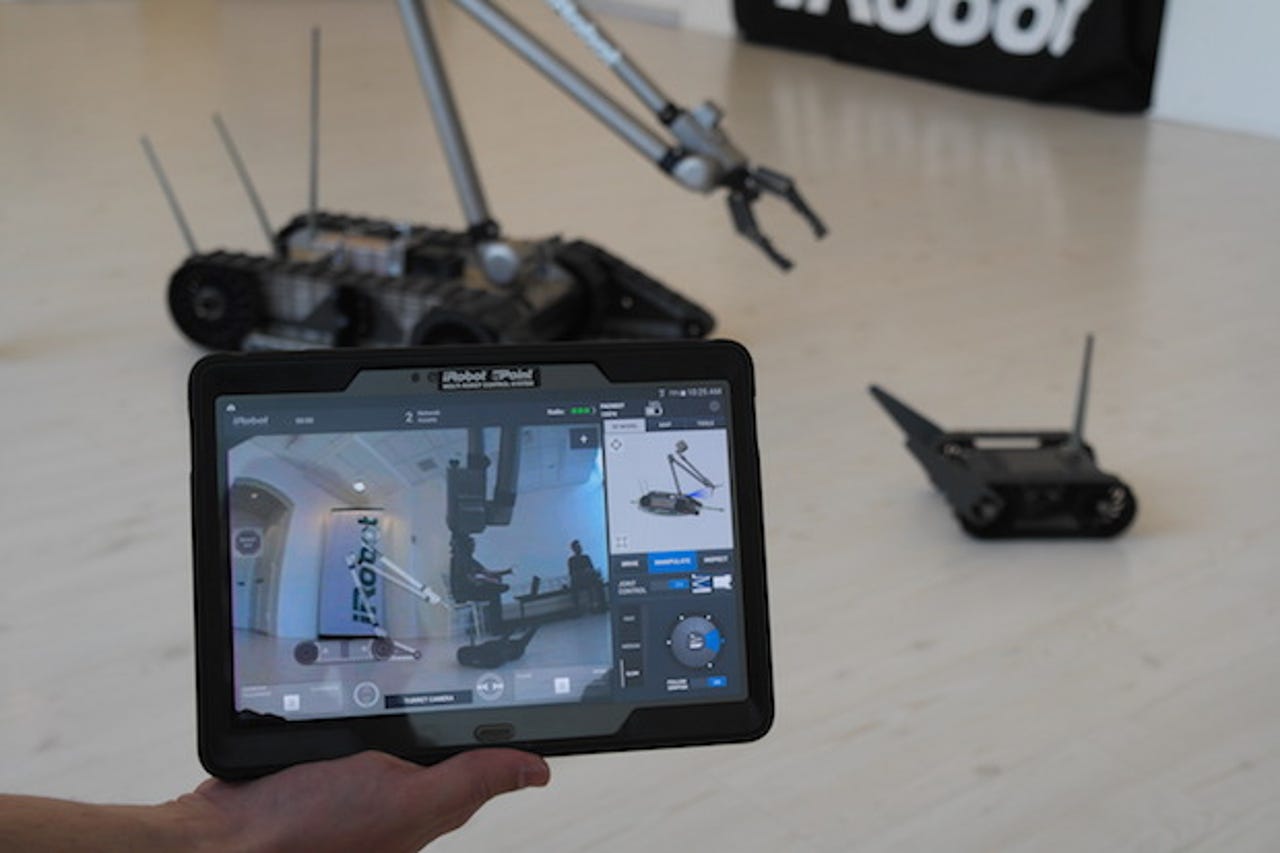Need a controller for your robot? There's an Android app for that

NEW YORK — Imagine a robot. Not just any robot, but the kind that goes into nuclear accidents for industrial clean-up, or out in the field on bomb disposal duty. It's a rough life for a robot.
But you rarely think of the people on the other end, controlling the unmanned vehicle from a safe distance.
On Thursday, iRobot announced and unveiled the first multi-robot controller for first responders, law enforcement, and industrial customers in form of no less than an Android tablet. Not just any, but nearly every Android tablet on the market, thanks to the downloadable secure app that's used to control nearly every facet and feature of iRobot's robotic product range.
At a private briefing in New York, ZDNet saw for the first time the Android-based tablet controller in all its glory.
Think of the best video game you've ever played and apply it to real life. iRobot's propriety uPoint Multi-Robot Control (MRC) system is an app that can run on nearly every Android tablet, allowing bring-your-own-device (BYOD) users to control remotely iRobot's existing and upcoming range of unmanned robotic vehicles.
"If you can play Angry Birds, you can operate a robot," said iRobot's Orin Hoffman, speaking to ZDNet at the briefing.
By using the touch-screen technology embedded in Android-based tablets, the uPoint MRC makes it easy to control, manoeuver, and operate iRobot devices.
With simplified controls, vector-based "cruise-control" driving technology, and touch-based user interface intuition, it's designed with user experience first-and-foremost, making it easy for any newbie to pick up, learn, and operate the robot within minutes.
Hands-on with the device, operating a robot that can cost in the hundreds of thousands of dollars, is a daunting task at best — knowing full well that on the "fast" speed setting you could be driving it into a brick wall at rapid speed. But the controls are easy to use, intuitive, and responsive — even at long range.
"If you can play Angry Birds, you can operate a robot."
— iRobot
With the virtual joystick, controlled through the near full-screen video display from the robot's various cameras, it's easy (even if it's a little uneasy from the untrained user) to operate. Its vector-based controls can be used to guide the robot through tight spots. And, it lands with macros which can be used to repeat tricky tasks, such as operating door handles and navigating through small spaces.
You can also easily manipulate the various components through its easy-to-learn user interface. Drag and slide the various components, such as the arm or the numerous cameras, to the desired position through a dedicated display within the app. And the sensors that pick up various forms of data can be shared through secure channels or cross-platform observers for across-the-board analysis.
Featured
By integrating the cloud and in-built Android features, the robot's users can share information through nearly every cloud platform, from public to private clouds — including law enforcement networks.
(And yes, if you want to share or stream a video to Facebook or Twitter, you can. The option is yours.)
It's the closest thing most people will no doubt compare to a video game. But think of the practical applications. Bomb disposal, an eyes-on through industrial incidents, and navigating through long and deep tunnels. With multiple devices, you can switch devices and robots in a near-instant.
Although the uPoint MRC is comprehensive in its feature set, the company is aiming to add even more over the coming months. In the future, the company said, facial and object recognition could be added over time, along with increased mapping capabilities.
The uPoint MRC will be available by the second-quarter of 2015.
